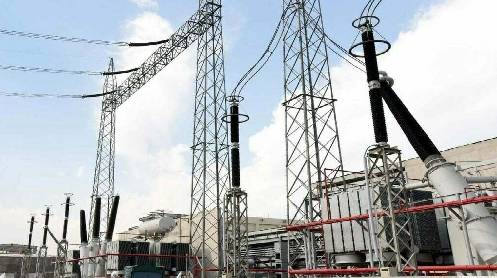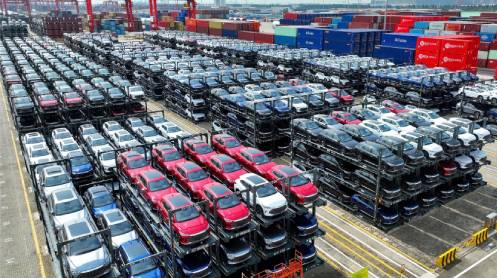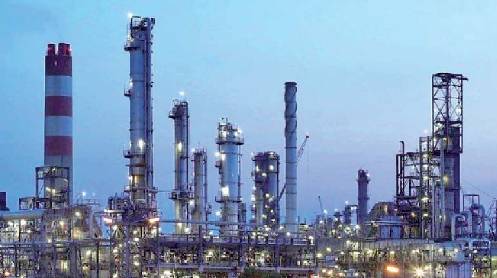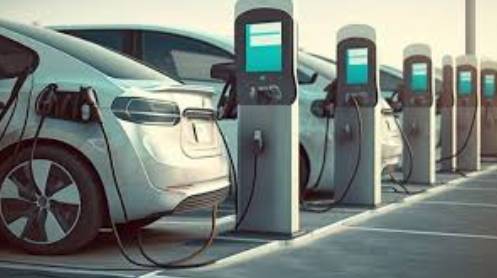ISLAMABAD: The federal government is mulling an increase in electricity tariff of up to Rs 5 per unit through rebasing to be implemented from July 1, 2023, as Power Purchase Price (PPP) payments will touch over Rs 3 trillion during FY 2023-24, well informed sources in Power Division told Business Recorder.
The proposed rebasing to raise tariff between Rs 4 -5 per unit from next fiscal year is based on different assumptions including further Rupee devaluation, which according to one assumption will touch Rs 382/ $ during the last quarter of FY 2023-24 against assumption of Rs 180 or Rs 190/$ during the outgoing fiscal year. Discos have also sought over Rs 600 billion revenue requirements for FY 2023-24.
The country’s circular debt has already touched Rs 2.5 trillion due to massive devaluation of Pak Rupee, low recovery by power Distribution Companies (Discos), failure in reduction of losses as per Nepra’s targets. The lenders are dissatisfied with the performance of country’s power sector.
Discos’ tariff: Nepra approves Rs1.61 per unit positive adjustment for April
During the current fiscal year, the coalition government has paid an amount of about Rs 300 billion to reduce circular debt, which is growing by Rs 500 billion per annum, i.e., Rs 41.66 billion per month.
According to sources, National Electric Power Regulatory Authority (Nepra) has informed the Power Division that it is in the process of finalizing rebasing of consumer-end tariff for the FY 2023-23 for Discos. One of the major components of tariff is the PPP which constitutes over 90% of the overall revenue requirement of Discos.
The Authority by adopting a forward looking approach, determines PPP references each year, keeping in view the ground realities. These references remain applicable unless new references are notified.
The sources maintained that Nepra-determined PPP references for the FY 2022-23 were notified by the Federal Government from July 25, 2022.
“Although, variations in actual PPP vis-à-vis the projected references are actualized during the year through monthly fuel charges adjustment and quarterly adjustments as provided in Nepra Act and notified tariff determinations; however, such references require regular updation/ revision, to account for the impact of new capacity additions, devaluation of PKR, change in fuel prices, variation in interest rates and CPI indexations,” the sources added.
The purpose of revision in PPP references is to minimize the impact of future monthly Fuel Charges Adjustments (FCAs) and quarterly variations and to provide a more predictable tariff for the consumers as envisaged in Section 31 (3) (i) of Nepra Act which states that “tariffs should seek to provide stability and predictability for customers”.
Further, a realistic projection of future tariff enables the Federal Government to budget its subsidy requirements more realistically, keeping in view its socioeconomic objectives; therefore, projection of PPP is of utmost importance.
According to budget documents, the government intends to increase subsidy for power sector to Rs 579.075 billion for FY 2023-24 from Rs 455 billion allocated for 2022-23, posting an increase of over 27 per cent.
For Inter-Discos tariff differential, an amount of Rs 225 billion has been earmarked in the budgeted amount of 2022-23 against allocations of Rs 184 billion for FY 2021-22, which is 21.6 per cent higher compared to outgoing fiscal year.
The government has budgeted Rs 25 billion for WAPAD/ PEPCO receivables – merged districts of KP (FATA subsidy against Rs 20 billion in budget 2022-23.)
The budget documents further reveal that an amount of Rs 150 billion has been earmarked as Inter-Disco Tariff Differential in 2023-24 against Rs 225 billion in 2022-23, which is over 33 per cent less compared to outgoing year. The government has earmarked Rs 55 billion for AJ&K TDS in 2023-24 against budgeted Rs 3 billion in 2022-23 which was revised to Rs 75 billion. The government has also allocated Rs 25 billion on account of deficit for AJK against electricity revenue shortfall.
The sources further revealed that Nepra has projected PPP for the FY 2023-24 by taking into account assumptions of generation of 149,318 GWh from National Grid, including drawl of 1100-MW by KE each month.
The proposed increase will be based on exchange rate ($/PKR) projections under following three scenarios:
Economy Forecast Agency forecast- first quarter Rs 294/$, second quarter Rs304/$, Quarter 3 Rs 302/$ and Quarter 4, Rs 313/$; (ii) Bloomberg forecast; first quarter, 294/$, second quarter, 304/$, third quarter Rs 312/$ and 4th quarter Rs 321/$.
However, according to Nepra’s own projections, based on recent devaluation scenario during first quarter of FY 2023-24, Rs 305/$, second quarter, Rs 329/$, quarter 3rd Rs 355/$ and 4th quarter Rs 382/$.
Other factors which are also part of determination of base tariff are as follows: (i) Pak CPI of 18.5% as per the World Bank Pakistan Macro-Economic Outlook Report; (ii) average US CPI of 2.5% based on IMF World Economic Outlook Report (April 2023) and projections of Bloomberg Report; (iii) average KIBOR of 22 per cent; (iv) average LIBOR/ term SOFR of 4.7 per cent; (v) average RLNG price of $ 12.69/ mmbtu; (vi) average imported coal price of USD 149.14/metric ton; (vi) average local coal price of USD 45.7l/metri ton (including both fixed and variable components) and; (vii) GDP growth of 4.3% as assumed in IGCEP.
“We had presumed rebasing of Rs 2 per unit for FY 2023-24 but current assumptions indicate a raise between Rs 4-5 per unit,” the sources added.
The current average electricity tariff for domestic is over Rs 40 per unit which also includes surcharges, taxes, FCAs and QTAs.







